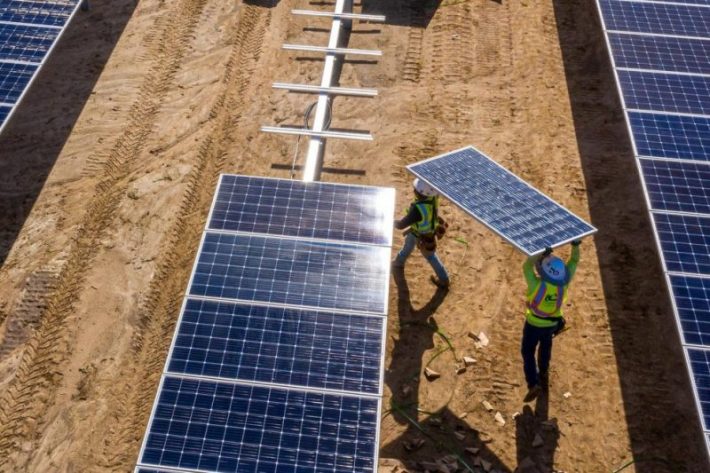US officials have made a preliminary announcement on tariffs likely to be imposed on solar panels developed by Chinese companies but partly assembled and exported from Southeast Asia.
On Tuesday, the US Commerce Department revealed anti-subsidy countervailing duties on solar cells imported by companies in Vietnam, Cambodia, Malaysia and Thailand.
The move that could make it more expensive both to produce and buy solar panels in the United States.
ALSO SEE: Australian Extensions for Coal Mines Angers Pacific States
The announcement is the first of two preliminary decisions expected by the Commerce Department this year in a trade case brought by Korea’s Hanwha Qcells, Arizona-based First Solar and several smaller companies seeking to protect billions of dollars in investments in US solar manufacturing.
The group, calling itself the American Alliance for Solar Manufacturing Trade Committee, accused Chinese companies with factories in the four countries of flooding the US market with panels priced below their cost of production and of receiving unfair subsidies that make American products uncompetitive.
Others in the solar industry say those low-priced imports are critical for both clean-energy project developers competing with fossil fuels and domestic solar factories that use overseas-made cells in panels assembled on US soil.
Subsidy duties on imports
According to a fact sheet posted on the Commerce Department’s website, the agency calculated general subsidy rates of 9.13% for imports from Malaysia, 8.25% for imports from Cambodia, 23.06% for imports from Thailand and 2.85% for imports from Vietnam.
Large manufacturers have their own separate duty rates. For instance, Commerce calculated a duty rate of just 0.14% for products made by China’s Trina Solar in Thailand.
Commerce calculated a duty rate of 14.72% for products produced in Malaysia by one of the companies behind the petition, Hanwha Qcells.
Representatives for Trina and Hanwha were not immediately available for comment.
An attorney for the American Alliance for Solar Manufacturing Trade Committee, Tim Brightbill, said the department’s findings were in line with expectations and that the final decision could yield higher duties.
“Some of the margins definitely do not yet reflect the full extent of government subsidies that are occurring in the industry,” Brightbill said on a call with reporters.
A final order will be made in April next year.
- Reuters with additional editing by Jim Pollard
ALSO SEE:
Decline in China’s Solar Output Seen Due to Oversupply – PV Mag
Booming Solar Puts 2030 Renewable Energy Goals ‘Within Reach’
Chinese Solar Giants’ Profits and Revenue Plunge in First Half
China Wind, Solar Capacity Set to Outstrip Coal For First Time
China Building More Solar, Wind Than Rest of World Combined
US Tariffs Loom on Chinese EVs, And Maybe Solar Panels
US Set to Restore China Solar Tech Tariffs After Korea Firm Plea
EU to Avoid Trade Curbs in China Solar Panel Firms Battle
China Solar Firms Paying Price of Global Dominance – FT
Xinjiang Rules: $640m of SE Asian Exports Held up at US Ports
























